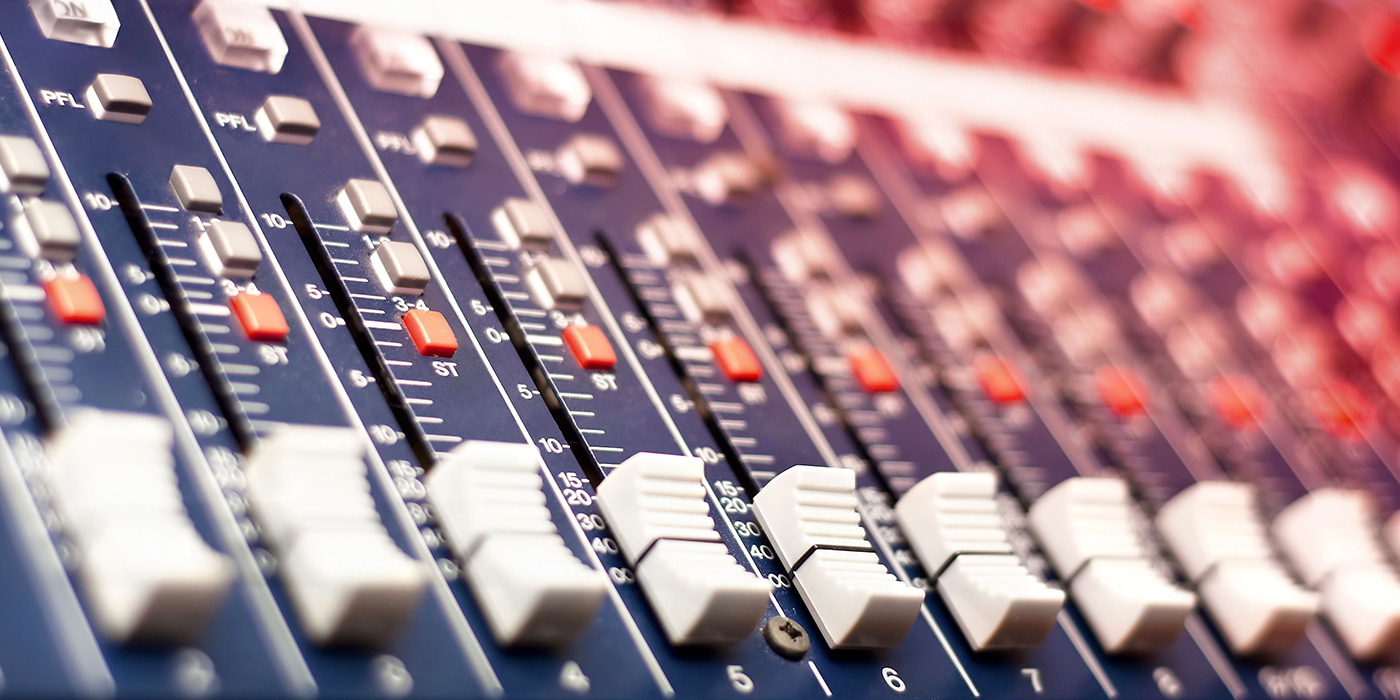Get that low end tight and get it right.
By Eric Ferguson
When I’m mixing a song, nothing is more elusive than achieving a perfectly balanced low end. Bass frequencies present unique challenges, and if often takes experimentation, skill, and compromise to deliver a tight and deep mix. This said, when Recording received an email from a reader wondering how to get that “big bass sound heard on today’s recordings”, I set out to compile some of the tips I’ve picked up while trying to make professional mixes.
Tip One: Make sure you’re mixing the “right” bass and kick sounds. Sound choice is difficult because we often don’t know if something works until long after it’s been recorded. The classic example of this is the need to add kick samples when mixing. Be sure to listen to great records in the style you are tracking and educate yourself as to what has worked for the professionals. Should you have used a synth bass or an upright bass instead of a bass guitar? Did you get the right electric or synth bass sound for the style? Is the kick sound dated, too weak, or too overbearing? Changes to production, arrangement, or instrumentation, although difficult when mixing, can sometimes be the only solution to a low-end dilemma.
On Mixing
- The Dirty Knobs — Recording Wreckless Abandon
- Remixing John Lennon
- Vance Powell On Mixing The Raconteurs’ Help Us Stranger
- Steinberg Cubase Power Tips With Sound Designer Robert Dudzic
- On Mixing
- The Art Of Cooking Up A Good Mix!
- Tracking and Mixing for Solid Lows
- Observations On Mixing
- 10 Tips for Better Low End
- Multiband Dynamics
Tip Two: Make sure the bass is playing the right part. This may seem unrelated to recording, but a good mix can’t be achieved if the kick and bass are fighting. Sloppy performances or parts that do not support each other will make the low-end muddy. Well-defined in-the-pocket bass lines are essential for a tight mix.
Tip Three: Compress the bass and kick. The subject of compression has been extensively explored in Recording—check out articles on compression in this library to learn more. Gentle compression on the kick and heavier limiting on the bass help insure that these two instruments are not erratic and stay at the level you desire.
Tip Four: Use EQ to carve out a “home” for every instrument. Although a well-recorded, full-bodied instrument might sound fabulous in solo, EQ is often needed in mixing to cut frequencies that are masking other parts. Is that wonderfully rich rhythm guitar covering the bass? Thin the guitar (and other thick instruments) with a low-cut filter and reserve for the bass its own place. As a side note, I often think of a mix as a layer cake, with individual tracks occupying their own frequency layers. I EQ the kick to sit at the bottom, the bass layered above that, followed by guitars and other instruments in their own respective sonic layers.
Tip Five: Thin the bass to make room for the kick. That’s right, I just suggested cutting bass from the bass, a move that might seem counterintuitive when on a mission for deep low end. The truth is that a thick bass will often muddy a mix and cover the kick with unnecessary super-low frequencies. Try putting a lowcut filter on the bass, and gently sculpt away frequencies below 100 Hz. This can help define the bass, while simultaneously saving the bottom frequency range for the kick.
Tip Six: Use midrange to make the bass and kick appear louder. Is the bass hard to hear yet already big enough? Try boosting 800 Hz to 2 kHz and allow harmonics, attack, and squeaks to define the bass in a frequency range far from the touchy low end. You can do the same with the kick, brightening its 2–4 kHz beater snap so the drum pops through the mix independent of its low-end content.
Tip Seven: Use multiple speakers when mixing. This is standard technique for all professional mixers. Check your mix on small speakers to see if the bass and kick can still be heard. Use big speakers to see if your bass is too big. Listen in your car and also check the mix on headphones. Remember that your mix might be played anywhere and you want your low end to be as compatible as possible with every environment.
Tip Eight: Walk around the room when mixing. Millions are spent to manage low frequencies in professional control rooms. If you are working at home, make sure to listen to your mix from multiple locations, as your control room is probably radically uneven in low-frequency response.
Tip Nine: Make a reference playlist and compare to it while mixing. Burn a mixed CD or assemble a playlist for your smartphone of professional recordings you know and love, then compare to these references to see if your low end is thin or too big. You can also use this playlist to help learn new speaker systems. Listen to these reference tracks in your car and on headphones, as this will better educate your ears to interpret your own mixes.
Tip Ten: Experiment with multiband compression on the stereo bus. Multiband compressors and limiters have grown to be quite popular in today’s DAW environment. Multiband compressors split the signal into two or more frequency ranges, then independently limit each band. Using a multiband compressor on the stereo mix can be a great boon, as low frequencies tighten nicely without affecting the rest of the mix. Be careful, though—there’s a reason I left this tip for last! Overdone multiband compression can quickly take all life from a mix, and using these compressors effectively takes lots of practice. Once you get good with them, though, they’re just one more tool you can use to give your tracks the slammin’ low end they deserve.


